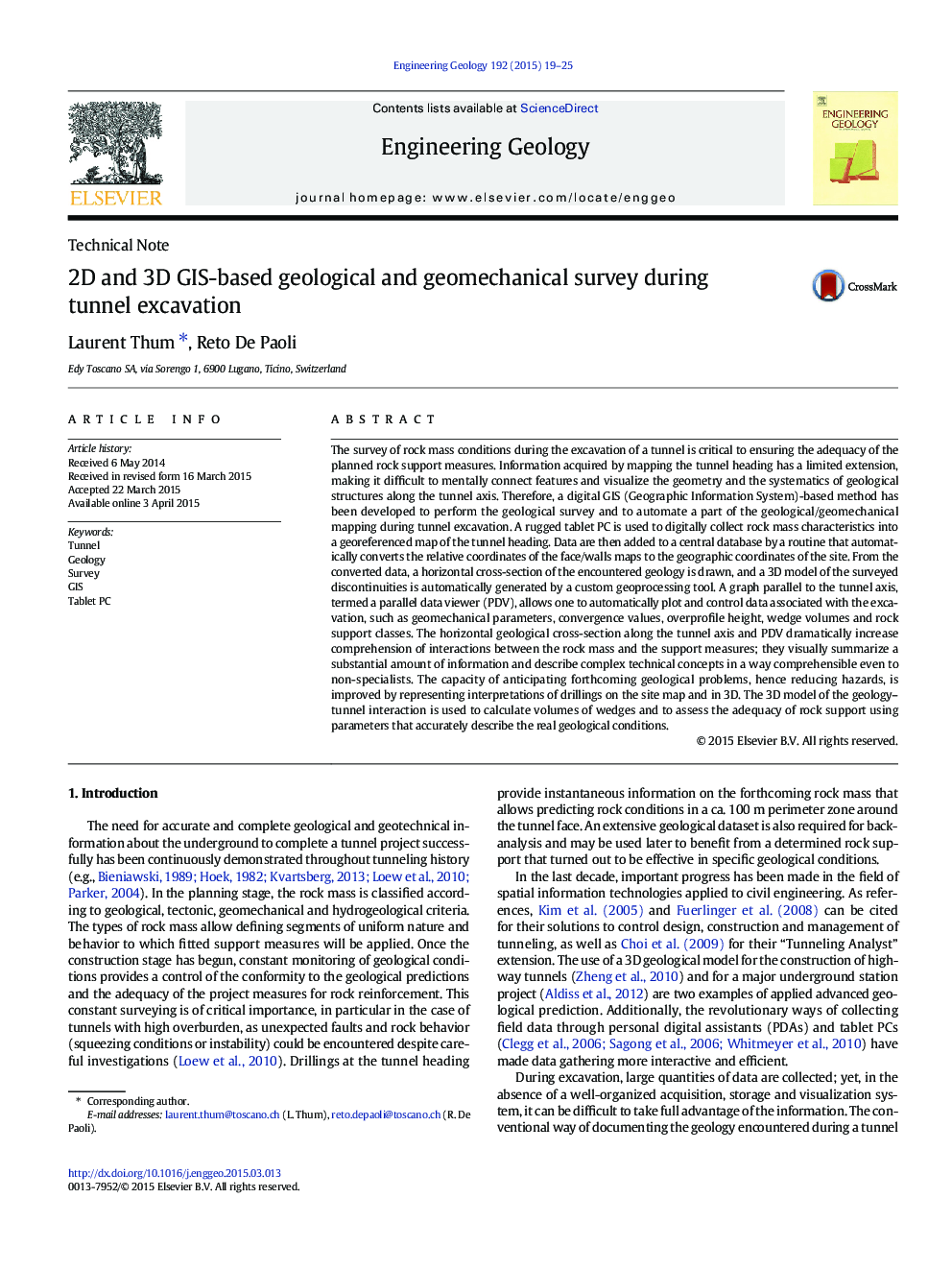| Article ID | Journal | Published Year | Pages | File Type |
|---|---|---|---|---|
| 4743273 | Engineering Geology | 2015 | 7 Pages |
•A GIS-based method is proposed to perform a geological survey in a tunnel.•A rugged tablet PC is used to digitally collect the rock mass characteristics.•A horizontal cross-section is drawn on the basis of the georeferenced features.•Numerical excavation-related data are automatically plotted next to the tunnel map.•A 3D model of discontinuities is generated using their geometrical attributes.
The survey of rock mass conditions during the excavation of a tunnel is critical to ensuring the adequacy of the planned rock support measures. Information acquired by mapping the tunnel heading has a limited extension, making it difficult to mentally connect features and visualize the geometry and the systematics of geological structures along the tunnel axis. Therefore, a digital GIS (Geographic Information System)-based method has been developed to perform the geological survey and to automate a part of the geological/geomechanical mapping during tunnel excavation. A rugged tablet PC is used to digitally collect rock mass characteristics into a georeferenced map of the tunnel heading. Data are then added to a central database by a routine that automatically converts the relative coordinates of the face/walls maps to the geographic coordinates of the site. From the converted data, a horizontal cross-section of the encountered geology is drawn, and a 3D model of the surveyed discontinuities is automatically generated by a custom geoprocessing tool. A graph parallel to the tunnel axis, termed a parallel data viewer (PDV), allows one to automatically plot and control data associated with the excavation, such as geomechanical parameters, convergence values, overprofile height, wedge volumes and rock support classes. The horizontal geological cross-section along the tunnel axis and PDV dramatically increase comprehension of interactions between the rock mass and the support measures; they visually summarize a substantial amount of information and describe complex technical concepts in a way comprehensible even to non-specialists. The capacity of anticipating forthcoming geological problems, hence reducing hazards, is improved by representing interpretations of drillings on the site map and in 3D. The 3D model of the geology–tunnel interaction is used to calculate volumes of wedges and to assess the adequacy of rock support using parameters that accurately describe the real geological conditions.
Graphical abstractFigure optionsDownload full-size imageDownload as PowerPoint slide
